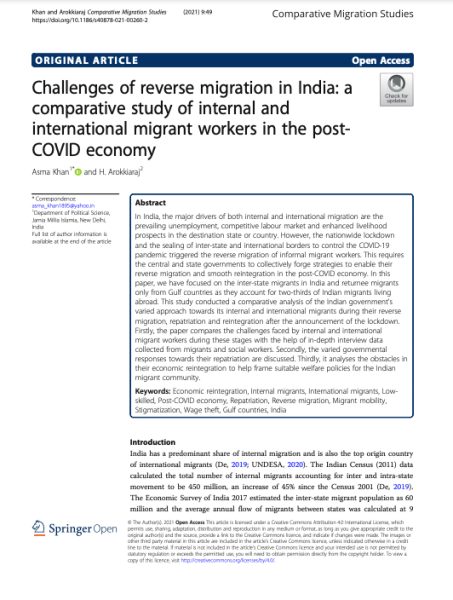Challenges of reverse migration in India: a comparative study of internal and international migrant workers in the post-COVID economy

In India, the major drivers of both internal and international migration are the prevailing unemployment, competitive labour market and enhanced livelihood prospects in the destination state or country. However, the nationwide lockdown and the sealing of inter-state and international borders to control the COVID-19 pandemic triggered the reverse migration of informal migrant workers. This requires the central and state governments to collectively forge strategies to enable their reverse migration and smooth reintegration in the post-COVID economy. In this paper, we have focused on the inter-state migrants in India and returnee migrants only from Gulf countries as they account for two-thirds of Indian migrants living abroad. This study conducted a comparative analysis of the Indian government’s varied approach towards its internal and international migrants during their reverse migration, repatriation and reintegration after the announcement of the lockdown. Firstly, the paper compares the challenges faced by internal and international migrant workers during these stages with the help of in-depth interview data collected from migrants and social workers. Secondly, the varied governmental responses towards their repatriation are discussed. Thirdly, it analyses the obstacles in their economic reintegration to help frame suitable welfare policies for the Indian migrant community.
